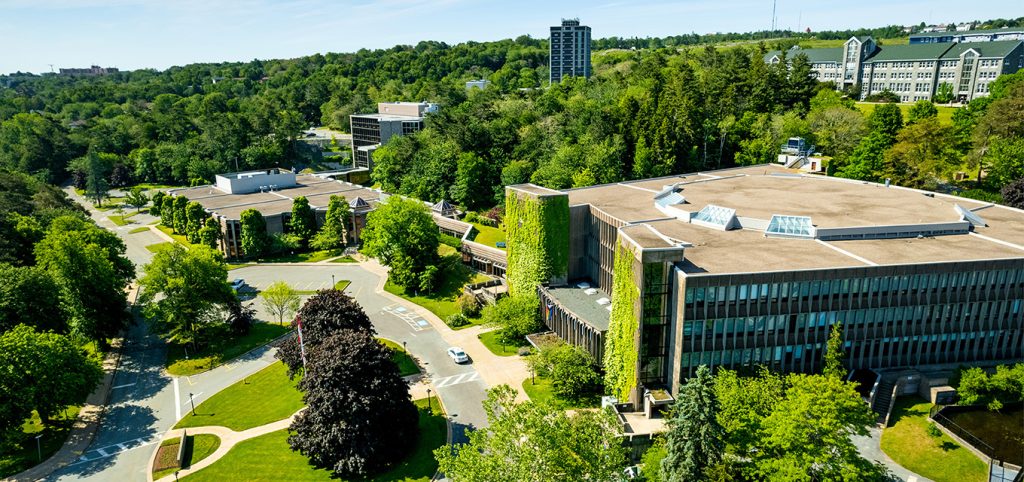Green crab shells may be the plastic ingredient of the future
Posted Feb 15, 2020 05:13:00 PM.
This article is more than 5 years old.
Nova Scotia's Kejimkujik Seaside National Park has long had an overabundance of European green crabs.
The invasive species first arrived on the South Shore decades ago, and in recent years the park's ecologists have been working to try to get rid of them.
“In 2010 we put some efforts in place to try to reduce the populations there in order to support our ecosystem processes and the overall health within our estuaries,” says Gabrielle Beaulieu, project manager for the eelgrass conservation restoration project at Kejimkujik Seaside.
The crabs affect natural ecosystems in the local waters, throwing off the delicate balance of eel grass growth, juvenile fish, and soft shell clams that are native to the estuary.
Beaulieu and her team have now been tracking the green crabs for about a decade, and in that time have caught about two million of them, while leaving other species to prosper.
“Usually there's not much impact, that trap is just laying on the bottom, it's not being dragged,” she explains. “We might get some situations where we catch other by-catch but those are immediately returned to the water.”
Until now, the majority of the crabs have been sent either to labs for research or to farms in the area to be used as fertilizer.
“At this point often we will have a portion of that catch donated to research throughout Atlantic Canada. But also we have some arrangements with local community farms that will use the green crabs as compost, directly tilling it into their soil,” says Beaulieu.
But this past year, work started on a potential new use for the crab shells — turning them into plastic.
Chemists at McGill University in Montreal have been extracting polymers from the crustaceans to use as a compound in bio-plastics.
“[We] try to extract them so that we can turn them into plastics and actually make stuff out of them,” says Audrey Moores, associate professor in the chemistry department at McGill University and one of the scientists working on the project.
Moores says before they started working with Keji's green crabs, the lab already had success with similar species like lobster and shrimp.
“We have a lot of evidence suggesting that it should, because we tested lobster shells, crab shells, shrimp shells, and found that all of these were giving slightly different results but yet were effective at producing a bio plastic,” she explains.
When Beaulieu heard about the research about a year ago, she called up McGill, asking to work together to find a use for Nova Scotia's plethora of invasive green crab.
The chemist says it was pretty evident even before research began that shells would be an ideal component of bio plastic.
“When you eat one you can see that the shell is super hard and has this really very resistant quality about it that makes it really nice for making stuff,” says Moores.
Now that the process of extracting the material from the shells has been done, the lab is working to expand the capacity.
“Our process right now works at the, say multi-gram scale, close to a kilogram. But now we want to make several kilograms,” Moores says. “So how can we adapt our machinery and so on so that we can get to that scale?”
The McGill scientist also says that the project is a great opportunity to put chemistry to use in the real world.
“We work in our lab, we don't go out so often,” says Moores. “It's just an amazing way to actually see how our little research done in our labs can actually have an impact outside.”
And although this bio-plastic isn't the first of its kind, Moores says it's innovative in its sustainability practices.
“We have that is unique is that we use a process that is solvent-free. So we don't use any liquid during the reaction, and that means that we reduce the water use, the chemical use and the energy use by a lot,” she adds.
At Keji, Beaulieu says there are more than enough crabs to last a long time, and to turn them into something useful would be beneficial.
“What we're really interested in is finding multiple uses for this invasive species. They're all across Atlantic Canada, they're not going anywhere,” she says.
The project will continue for the next six to eight months, and Beaulieu says if successful the group will apply for more funding to continue the creation of bio-plastics and increase the scale even more. So far, $12,000 of crowdfunding was matched by Parks Canada and the Marine Environmental Observation, Prediction and Response Network's Fathom Fund.
“Now the next step is really funding a person who has the qualifications that Audrey's lab is looking for, to train and then come to Nova Scotia,” she adds. “We're going to give them as many green crabs as we can find.”








